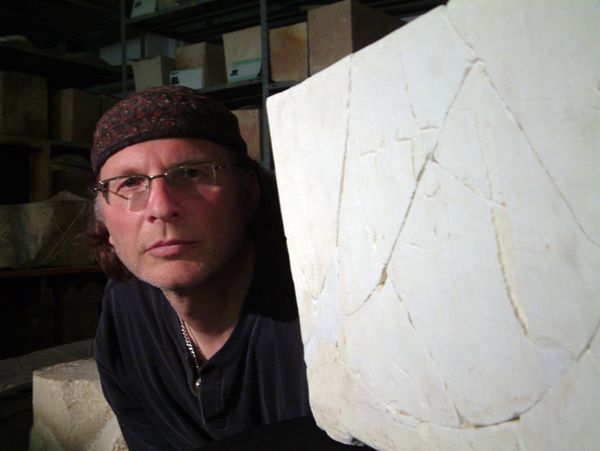Jesus Wife Forgery Charges Are Science Fiction
Here’s the latest twist on the Jesus Wife Papyrus. To review; prior to this discovery, the common wisdom was that there was nothing – I repeat, nothing – substantiating the idea that Jesus was married. No ancient text whatsoever. It was all “Da Vinci Code” stuff. Then along comes the Jesus Papyrus: (http://www.hds.harvard.edu/faculty-research/research-projects/the-gospel-of-jesuss-wife), a 2nd to 4th century Coptic text in which Jesus refers to someone – apparently Mary Magdalene – as his “wife”.

Instead of doing the science on this papyrus, weighing the implications and reviewing previously ignored archaeology e.g., the Talpiot tomb, the first line of theological defense was to declare the text irrelevant. The response was: “So what? Some 4th century Christians tried to rationalize marriage by saying that Jesus was married. This teaches us nothing about the historical Jesus or his marital status.” Clearly, this line of defense doesn’t work. After all, based on this logic, most Christian writings would have to be dismissed as late and historically irrelevant. The papyrus may be an invention, or it may be preserving history. But you can’t just ignore it.
So the sleeper agents of Christian Orthodoxy took another approach – it’s a forgery. Nevermind that the papyrus can be easily dated with a C-14 test, afterall a modern forger can write on a blank piece of ancient papyrus. Nevermind that the ink can be tested, afterall we can make up a Hollywood style scenario where an ancient papyrus is burned and the ash is used to pen the modern forgery (in reality, to work as ink, this is impossible since the ash would have to be mixed with modern elements, and the modern elements could be easily detected). Nevermind that there isn’t even a suspect or motive for this forgery; it’s a forgery! Why? Because we don’t like it. The “official” reasons for dismissing the papyrus were:
- The text is similar to the Gospel of Thomas.
- The text is exactly like the Gospel of Thomas.
- The text is disjointed like many damaged ancient manuscripts.
After a while, the naysayers realized that the three reasons given to dismiss the papyrus actually helped to authenticate it. Being “similar” to the Gospel of Thomas, helps to date it. Being “disjointed” makes it like other authentic, damaged manuscripts and, clearly, the text is not “exactly” like any Gospel because it’s the only one that refers to Jesus’ “wife”. So the naysayers had to fall back on some pretty heavy pseudo academic babble to scare all lay people into believing that the text is a forgery after all.
The pseudo academic babble came in the form of an online article by Andrew Bernhard from Oxford no less (http://www.gospels.net/gjw/mighthavebeenforged.pdf). And what does Andrew say? If I understand him correctly, he argues that something called the Grondin Interlinear version of the Gospel of Thomas has a kind of “typographical error” and that this type of typographical error appears in the Jesus Wife Papyrus. Meaning, someone forged the papyrus and used the Grondin Interlinear Gospel of Thomas as his guide. By copying the typographical error, however, the forger gave himself away. Bernhard’s argument is packaged in some pretty heavy analysis of Coptic writing, enough to scare anyone not at Oxford.
There’s only one slight problem with Bernhard’s analysis. I believe that Grondin’s Interlinear version became widely available online only in 2002, Bernhard says 1997. In any event, this papyrus was already seen in 1982 by Peter Munro, a prominent Egyptologist at the Free University in Berlin and a long time Director of the Kestner Museum in Hannover. More than this, he showed it to a colleague, Gerhard Fecht, who identified the papyrus as a 2nd to 4th century CE (AD) fragment. The collector who owns the papyrus turned over to Prof. King at Harvard Divinity School some signed and dated letters by Prof. Munro and an unsigned, undated note that appears to belong to the same 1982 correspondence. The latter states that “Professor Fecht believes that the small fragment…is the sole example of a text in which Jesus uses direct speech with reference to having a wife” (emphasis added). So when you get rid of the babble, what is Bernhard really saying? He is saying that the fragment was most likely forged “after 1997 when Grondin’s Interlinear was first posted online”. How could someone forge something in 1997, when the “forged” item was already referenced in 1982?

All the fancy Coptic gymnastics don’t change the basic fact that you can’t forge something retroactively. The only way around this is to argue that someone also forged the 1982 correspondence. Wow! Talk about “Da Vinci Code”, this is turning into a real whodunit. Who could be the culprit? Since the only possible suspect is the unknown owner of the manuscript, it must be him. Or not. What is his motive? Fame? Hardly, he remains anonymous. Money? Hardly, the best way to make money is to forge something that the Vatican agrees with, not dismisses. And when you blow all the pseudo-academic smoke away, there is a very easy way to ascertain whether the 1982 letter is a fake. All you have to do is go to a writing specialist and compare the unsigned 1982 letter with known writings of Prof. Munro and Fecht. If the letter matches one of them – bingo, it can’t be a forgery.
Has Bernhard or anyone else initiated an analysis of the letters accompanying the papyrus? Of course not. It’s best to just call the papyrus a “forgery”, despite the fact that no one can fake in 1997 a papyrus that was examined in 1982 – unless, of course, that forger is also a time traveler. Since all this forgery libel is just so much science fiction, maybe that’s the next line of defense. The Jesus Wife Papyrus can’t be authentic because a time traveler forged it in 1997 – and planted it in a private collection in 1982.

